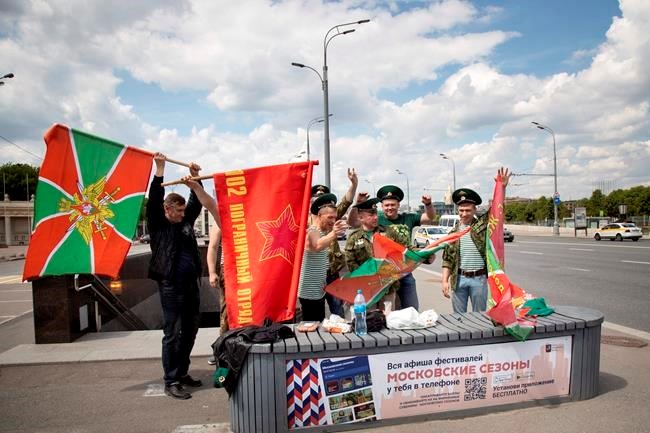MOSCOW — Health officials in Moscow updated their figures on coronavirus deaths Thursday, seeking to dispel doubts about Russia's comparatively low COVID-19 death toll.
The health department in the Russian capital said Moscow's coronavirus mortality rate for April was 1.4% to 2.8% depending on the calculation method, a range significantly lower than in London, New York and some other major cities.
On top of 636 deaths in April directly caused by COVID-19 reported earlier, the Moscow Health Department added the deaths of 756 people who tested positive for the virus but died of other causes. It noted that in 360 of those cases, the coronavirus acted as a “catalyst,” exacerbating the patients’ conditions and contributing to their deaths.
The health department also factored in 169 deaths of people who tested negative but autopsies showed likely succumbed to the virus.
The department previously only counted deaths directly resulting from the virus, leaving an increase in deaths compared to April 2019 as an unexplained “excess.” That aroused suspicions in Russian and Western health experts, who alleged that the authorities in Moscow and other Russian regions may have under-reported coronavirus deaths for political reasons.
Earlier this month, Russian President Vladimir Putin ordered the lifting of the nationwide economic shutdown that was put in place in late March and encouraged regional governors to gradually lift restrictions. He announced this week that a postponed Victory Day parade in Red Square that was set for May 9 to mark the 75th anniversary of Germany's surrender in World War II will take place on June 24.
Russian media said the Kremlin also plans to soon set a date for a
The massive parade, which is intended to underline Moscow's rising global clout, and the vote on the amendments would require lifting restrictions imposed to curb Russia's outbreak. Authorities have said it's safe to do so now because infections have peaked.
Kremlin critics disagreed, charging that the government is ready to jeopardize public safety for political ends. The number of new infections reported daily slowed after reaching record highs earlier this month, but it remains high; 8,300 new confirmed cases were registered Thursday.
Russian officials also reported 174 more virus deaths since the day before, repeating the highest daily death toll recorded Tuesday and bringing the nation’s total to 4,142.
Earlier this month, the Moscow Health Department acknowledged that the 639 coronavirus deaths it reported for April represented about 40% of the people who died in the city after testing positive for the virus. The rest had died of other ailments, it said..
Russian officials have denied any manipulation of virus statistics, insisting that Russia's death count was more precise than in other countries because it is based on autopsies in each case to determine the exact cause of death.
The capital's health department, citing clarified information, reduced in its revised data the number of April deaths that directly resulted from the coronavirus by three to 636.
If only the deaths directly caused by the coronavirus are taken into account, Moscow's virus mortality index last month would stand at 1.4%, the health department said. If the toll is expanded to include all those who died after testing positive, the index would be 2.8%, still significantly lower than 10% for New York and 23% for London, it noted.
The department predicted that Moscow's mortality index for May will likely rise, reflecting the peak infection point in late April.
Moscow has accounted for about half of Russia's more than 379,000 confirmed coronavirus cases, the world's third-highest behind the United States and Brazil.
Officials said detailed nationwide statistics on coronavirus mortality will be released later this week.
The Russian Health Ministry issued a new directive late Wednesday prescribing that asymptomatic people who tested positive for the virus should be counted separately from those with COVID-19 symptoms.
The ministry document also contained detailed instructions for recording COVID-19 deaths. The guidance explains situations when deaths should be attributed to the coronavirus and cases when it should be linked to chronic ailments.
The ministry said the instructions were based on advice issued by the World Health Organization.
Vladimir Isachenkov, The Associated Press



